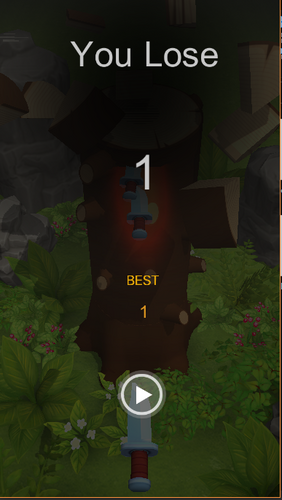Tree cut
A downloadable game for Windows, macOS, and Android
In game theory, a game tree is a directed graph whose nodes are positions in a game and whose edges are moves. The complete game tree for a game is the game tree starting at the initial position and containing all possible moves from each position; the complete tree is the same tree as that obtained from the extensive-form game representation.

The first two plies of the game tree for tic-tac-toe.
The diagram shows the first two levels, or plies, in the game tree for tic-tac-toe. The rotations and reflections of positions are equivalent, so the first player has three choices of move: in the center, at the edge, or in the corner. The second player has two choices for the reply if the first player played in the center, otherwise five choices. And so on.
The number of leaf nodes in the complete game tree is the number of possible different ways the game can be played. For example, the game tree for tic-tac-toe has 255,168 leaf nodes.
Game trees are important in artificial intelligence because one way to pick the best move in a game is to search the game tree using any of numerous tree search algorithms, combined with minimax-like rules to prune the tree. The game tree for tic-tac-toe is easily searchable, but the complete game trees for larger games like chess are much too large to search. Instead, a chess-playing program searches a partial game tree: typically as many plies from the current position as it can search in the time available. Except for the case of "pathological" game trees<a href="https://en.wikipedia.org/wiki/Game_tree#cite_note-1" ]<1]<="" a=""></a><a href="https://en.wikipedia.org/wiki/Game_tree#cite_note-1" ]<1]<="" a=""> (which seem to be quite rare in practice), increasing the search depth (i.e., the number of plies searched) generally improves the chance of picking the best move.</a>
<a href="https://en.wikipedia.org/wiki/Game_tree#cite_note-1" ]<1]<="" a="">
</a>

